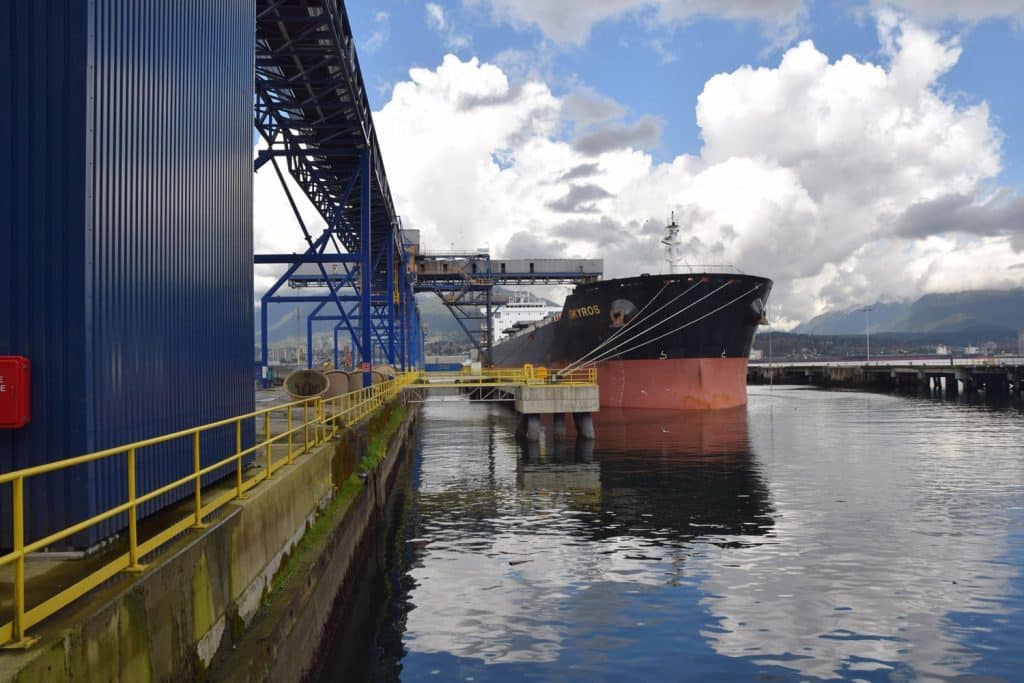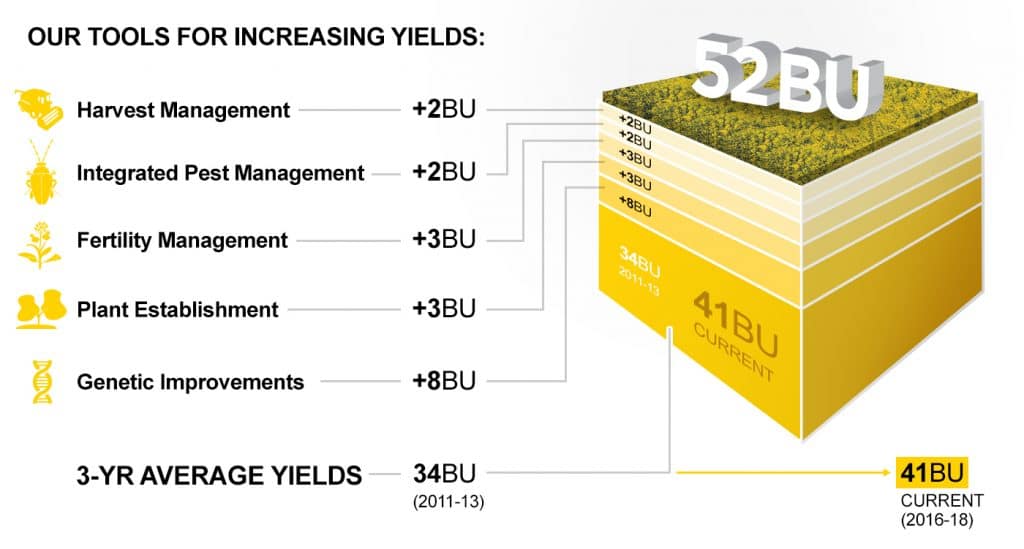Our plan to grow the Canadian canola industry

Keep it Coming 2025 is the strategic plan guiding the canola value chain as we prepare for opportunities and challenges ahead. The plan supports continued growth, demand, stability and success by setting clear targets and providing the framework to collectively work toward them.
The ultimate aim of our strategy is to achieve an average yield of 52 bu/ac to meet global market demand of 26 million metric tonnes by the year 2025. We’re moving toward that goal by focusing on three strategic priorities: (1) sustainable, reliable supply; (2) differentiated value; and (3) stable and open trade.
With every additional bushel we produce and sell, canola’s positive impact grows: More jobs. A more sustainable farm economy. Healthier food for the world.
Download the complete plan (published 2014).
Learn more about
Our targets
| wdt_ID | Targets | 2023 Results | Average (the initial strategic plan benchmarks) | 2025 |
|---|---|---|---|---|
| 2 | Exported Seed | 7.1 MMT | 8.1 MMT | 12 MMT |
| 3 | Domestic Processing | 10.5 MMT | 6.9 MMT | 14 MMT |
| 4 | Acres (Seeded Area) | 22.1 million | 20.2 million | 22 million |
| 5 | Yield | 36.9 bu/acre | 31.2 bu/acre | 52 bu/acre |
| 6 | Production | 18.3 MMT | 14.2 MMT | 26 MMT |
| 7 | Oil Content (Average of No. 1 Grade) | 43.2% | 44.4% | Maintain global competitiveness in oil content (10 yr average = 43.8%) |
| 8 | Saturated Fat Content | 6.6% | 6.7% | Global leadership position in oil saturated fat content |
| 9 | Meal Crude Protein Content (Oil-free, 12% moisture basis) | 39.5% | 39.7%¹ | Increase protein availability by target species (10 yr average = 38.7%) |
MMT = Million Metric Tonnes
118.5% moisture basis
Read about our sustainability targets.
Priority: Sustainable, reliable supply
In the past, the Canadian industry increased canola production through genetics and additional acreage. In future, growth will come from capturing the full potential of genetic advances with the right agronomy. With a better understanding of each producer’s unique circumstances and agronomic pressures, we can grow significantly more canola on about the same number of acres, thereby maximizing the value derived from every seed we plant.
Measures of success
- Average yield of 52 bu/acre
- 26 MMT of canola grown on 22 million acres
- Global leadership in quality characteristics of seed, oil and meal to meet customer requirements
- Increased protein availability in meal by target species
- Achievement of our sustainability goals
How we’ll get there
Research shows there is plenty of potential to improve yields by customizing our approaches to soil zones, disease management, insect pressures and weather. The key to growth is providing the best agronomic information and advice for each unique farm operation, based on the latest science.
We can add a total of 18 bu/acre to average yields through continued genetic gains and improvements in four key crop management areas: plant establishment, fertility management, integrated pest management and harvest management.
To learn more, read 52 By 2025: How we’ll get there (published 2014).
2025 sustainability goals
Along with our 2025 production goals, the canola industry has set bold but achievable sustainability targets. These two sets of goals work in tandem: As yields increase, we reduce energy use per bushel of canola produced, increase carbon sequestration and increase land efficiency.
These targets were established through our partnership with the Canadian Canola Growers Association and reflect the science-based approach to which both associations are committed.
Learn more about canola’s sustainability story.
Sustainability goals for Canadian canola
The Canadian canola industry has set environmental sustainability goals to accompany our 2025 production goals.
Learn more about these goals and canola’s strong history of environmental sustainability.
Priority: Differentiated value
To grow our markets, the industry emphasizes the unique value proposition of canola products, which provide high quality and useful functionalities at a competitive price. We work in established major markets that recognize these superior properties, and continue to build deeper appreciation of our products among oilseed importers, processors and end-users in promising emerging markets. We will also pay close attention to biofuel and new product opportunities to expand the demand for canola.
Measures of success
- 26 MMT of sustained annual demand
- Increase secondary markets to represent 20% of demand
- Increased meal value to narrow value gap between oil and meal
How we’ll get there
- Develop and implement country-specific marketing plans, based on product differentiation, to maintain and expand key markets
- Expand recognition of the superior properties of canola oil and meal in key markets
- Determine opportunities to expand demand for canola for use in biofuel and other new products
- Innovation to build on product quality and functionalities
Priority: Stable and open trade

To derive maximum value from increased yield and demand, the industry needs reliable access to export markets, where 90% of Canadian canola is consumed. We actively seek a positive trade environment, free of tariff and non-tariff barriers and trade disruptions.
Measures of success
- Reliable, competitive and open market access in top markets
- Market access issues dealt with efficiently and effectively
- Canola priorities reflected in governmental policy and process
- Canola’s contribution to food quality and security recognized by governments in major markets
- No trade impediments resulting from non-science-based regulation
How we’ll get there
- Promote science-based, risk-appropriate solutions to ensure a competitive operating environment
- Pursue trade policy initiatives with governments
- Work with governments to increase use of canola products in alternative markets
- Ensure government officials are informed of canola priorities and canola’s value proposition so they make decisions conducive to sustained profitability in the canola industry
- Encourage support for science-based solutions and science-based regulation
Footnotes
- World Food Organization[↩]
